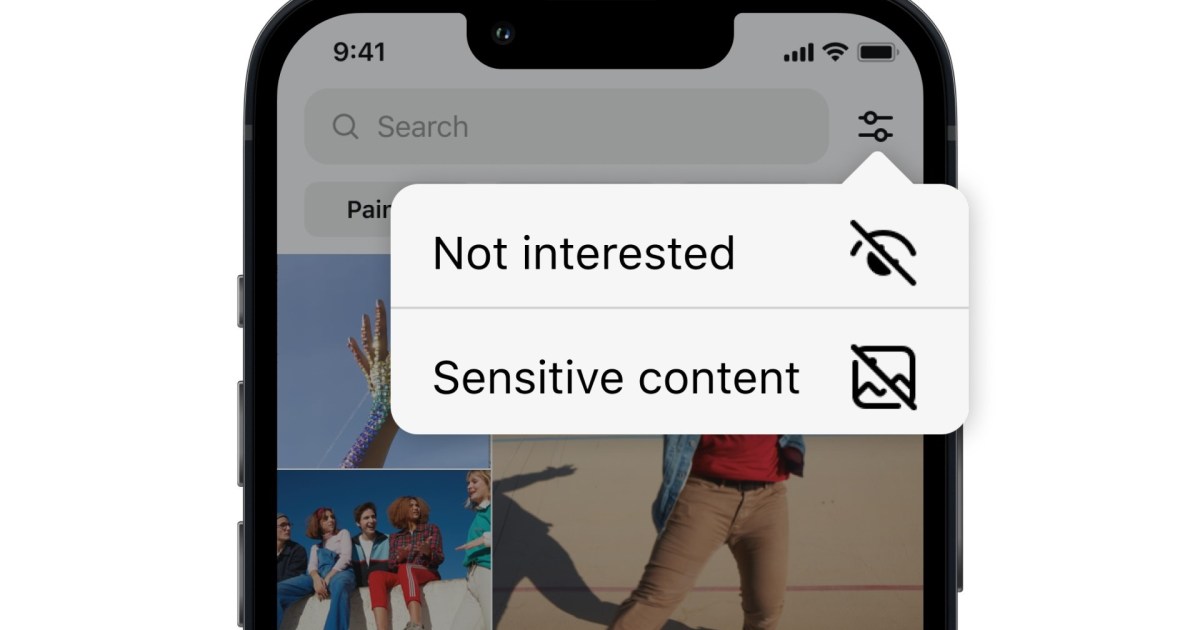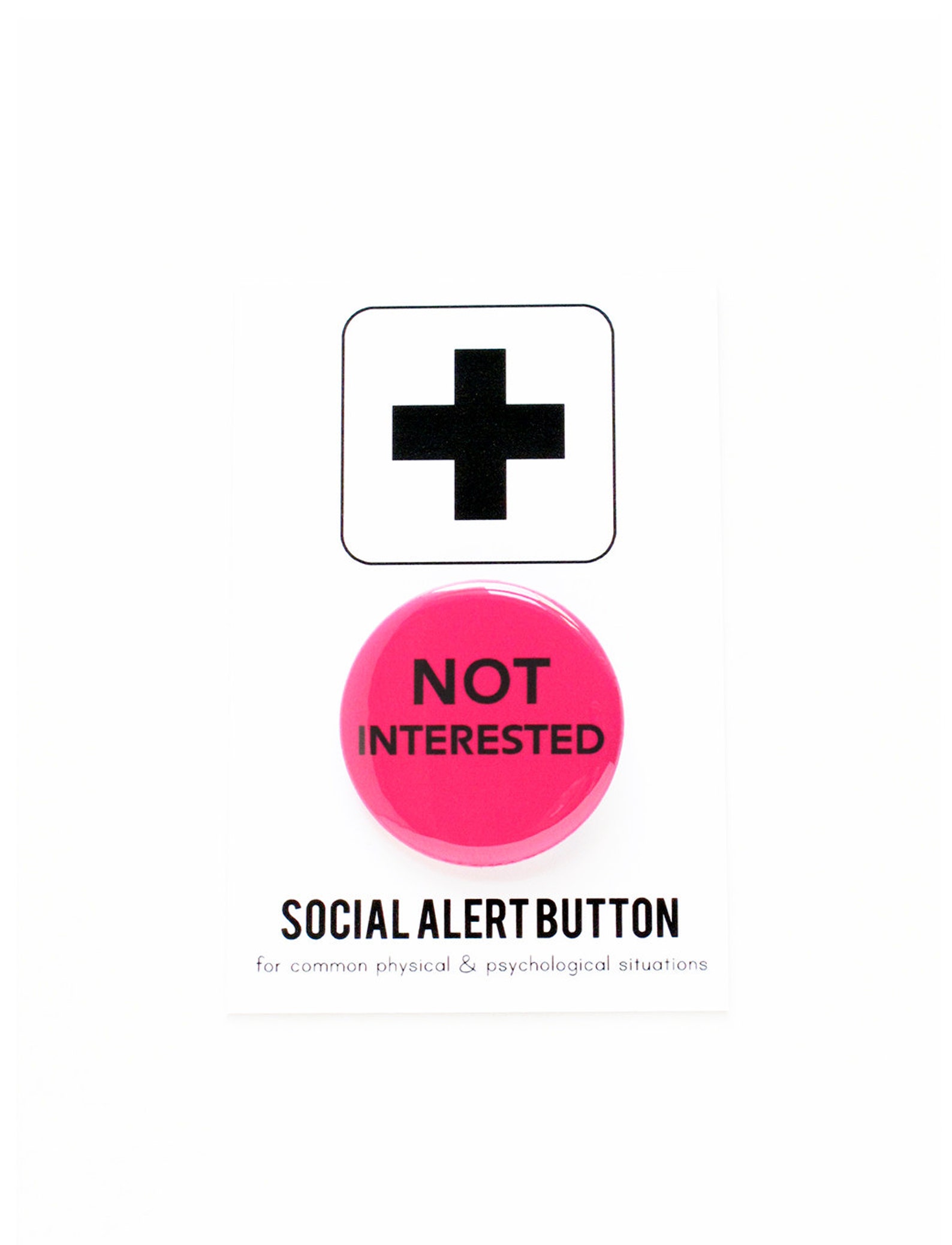Not interested buttons have become a critical component of modern digital platforms, allowing users to control their content preferences effectively. Whether on social media, email marketing, or recommendation engines, these buttons empower users to shape their online experiences. By integrating not interested buttons, businesses can improve user satisfaction, reduce irrelevant content, and enhance overall engagement.
In today's fast-paced digital world, users are bombarded with an overwhelming amount of information. To combat this, platforms have introduced various mechanisms to help users manage their content preferences. Among these tools, the not interested button stands out as a simple yet powerful solution. It gives users the ability to signal their disinterest in specific content, ensuring they receive more relevant and engaging material in the future.
This article will delve into the intricacy of not interested buttons, exploring their functionality, benefits, implementation strategies, and best practices. By the end, you'll have a comprehensive understanding of how these buttons can revolutionize user experiences across various platforms.
Read also:Steve Rodriguez The Ultimate Guide To His Life Career And Achievements
Table of Contents
- What is a Not Interested Button?
- Importance of Not Interested Buttons
- How Not Interested Buttons Work
- Benefits of Not Interested Buttons for Users
- Benefits of Not Interested Buttons for Businesses
- Implementation Strategies for Not Interested Buttons
- Best Practices for Using Not Interested Buttons
- Common Mistakes to Avoid
- Case Studies: Successful Use of Not Interested Buttons
- The Future of Not Interested Buttons
What is a Not Interested Button?
A not interested button is a feature commonly found on digital platforms that allows users to indicate their disinterest in specific content. This button is typically displayed alongside content items, such as posts, emails, or recommendations, enabling users to signal that they do not wish to see similar content in the future.
Key Features of Not Interested Buttons
- User-Centric: Designed to give users control over their content preferences.
- Adaptive: Helps platforms adapt to user behavior by adjusting content algorithms.
- Transparent: Provides clarity about user intent and preferences.
Platforms like YouTube, Facebook, and email marketing services have adopted this feature to enhance user satisfaction and engagement. By understanding the core functionality of not interested buttons, businesses can better tailor their strategies to meet user expectations.
Importance of Not Interested Buttons
Not interested buttons play a crucial role in shaping user experiences on digital platforms. They serve as a bridge between users and content providers, ensuring that the content delivered aligns with user preferences. This alignment is essential for maintaining user engagement and satisfaction.
Why Not Interested Buttons Matter
- Improved Content Relevance: By filtering out irrelevant content, platforms can deliver more personalized experiences.
- Enhanced User Control: Users feel more empowered when they have the ability to influence the content they see.
- Data-Driven Insights: Businesses gain valuable insights into user preferences, enabling them to refine their strategies.
With the increasing demand for personalized experiences, not interested buttons have become an indispensable tool for digital platforms.
Read also:Claressa Shields Net Worth 2024 A Deep Dive Into Her Wealth Career And Achievements
How Not Interested Buttons Work
The functionality of not interested buttons revolves around collecting user feedback and using it to refine content delivery. When a user clicks the not interested button, the platform records this action and adjusts its algorithms to reduce the likelihood of displaying similar content in the future.
Technical Mechanism
- Data Collection: Platforms gather data on user interactions with the not interested button.
- Algorithm Adjustment: Machine learning models analyze this data to refine content recommendations.
- Feedback Loop: Continuous feedback ensures that the platform adapts to evolving user preferences.
This process not only enhances user satisfaction but also improves the efficiency of content delivery systems.
Benefits of Not Interested Buttons for Users
For users, not interested buttons offer several advantages that contribute to a more satisfying digital experience. These benefits include increased control, reduced clutter, and improved content relevance.
Key Benefits
- Personalization: Users receive content that aligns with their interests and preferences.
- Time Savings: By filtering out irrelevant content, users save time and focus on what matters most.
- Empowerment: Users feel more in control of their digital environments.
These advantages make not interested buttons an essential feature for enhancing user satisfaction.
Benefits of Not Interested Buttons for Businesses
Businesses also benefit significantly from incorporating not interested buttons into their platforms. These buttons provide valuable insights into user preferences, enabling businesses to optimize their content strategies and improve overall performance.
Advantages for Businesses
- Enhanced Engagement: By delivering more relevant content, businesses can increase user engagement and retention.
- Data-Driven Decisions: Insights gathered from not interested button interactions inform strategic decisions.
- Improved Conversion Rates: Personalized content leads to higher conversion rates and better business outcomes.
By leveraging these benefits, businesses can create more effective and user-friendly platforms.
Implementation Strategies for Not Interested Buttons
Successfully implementing not interested buttons requires careful planning and execution. Below are some strategies to consider when integrating this feature into your platform.
Best Implementation Practices
- Placement: Position the not interested button prominently but unobtrusively to ensure usability.
- Feedback Mechanism: Develop a robust feedback system to capture and analyze user interactions.
- Testing: Conduct thorough testing to ensure the button functions as intended across all devices and platforms.
By following these strategies, businesses can maximize the effectiveness of not interested buttons.
Best Practices for Using Not Interested Buttons
To ensure the success of not interested buttons, it's important to adhere to best practices. These practices focus on usability, transparency, and user experience.
Key Best Practices
- Clarity: Clearly label the not interested button to avoid confusion.
- Transparency: Inform users about how their feedback will be used to improve content delivery.
- Continuous Improvement: Regularly update and refine the not interested button feature based on user feedback.
Adhering to these practices will help businesses create a more user-friendly and effective platform.
Common Mistakes to Avoid
Despite their benefits, not interested buttons can sometimes be implemented incorrectly, leading to suboptimal results. Below are some common mistakes to avoid when using this feature.
Mistakes to Avoid
- Overcomplicating: Keep the not interested button simple and easy to use.
- Ignoring Feedback: Actively analyze and respond to user feedback to improve content delivery.
- Lack of Visibility: Ensure the not interested button is easily accessible to users.
Avoiding these mistakes will help businesses maximize the value of not interested buttons.
Case Studies: Successful Use of Not Interested Buttons
Several platforms have successfully implemented not interested buttons, achieving significant improvements in user engagement and satisfaction. Below are a few notable examples.
Example 1: YouTube
YouTube's not interested button allows users to skip ads and provide feedback on video recommendations. This feature has contributed to increased user satisfaction and improved content relevance.
Example 2: Facebook
Facebook's not interested button enables users to hide posts and provide feedback on content preferences. This has led to more personalized newsfeeds and higher user engagement.
These case studies demonstrate the effectiveness of not interested buttons in enhancing user experiences.
The Future of Not Interested Buttons
As technology continues to evolve, the role of not interested buttons is likely to expand. Advances in artificial intelligence and machine learning will enable even more precise content personalization, making not interested buttons an increasingly valuable tool for digital platforms.
Emerging Trends
- AI Integration: Enhanced AI capabilities will improve the accuracy of content recommendations.
- Multi-Platform Compatibility: Not interested buttons will become more seamless across various devices and platforms.
- Advanced Analytics: Businesses will gain deeper insights into user preferences through advanced analytics tools.
The future of not interested buttons looks promising, with endless possibilities for enhancing user experiences.
Conclusion
Not interested buttons have revolutionized the way users interact with digital content, offering greater control and personalization. By understanding their functionality, benefits, and implementation strategies, businesses can create more effective and user-friendly platforms.
We encourage you to implement not interested buttons in your platform and explore their potential to enhance user experiences. Don't forget to share your thoughts and experiences in the comments section below. For more insights into digital strategies, explore our other articles on our website.
Stay informed, stay ahead!


